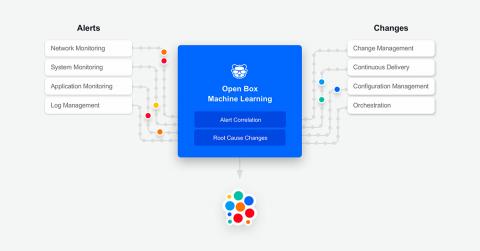Operations | Monitoring | ITSM | DevOps | Cloud
Incident Management
The latest News and Information on Incident Management, On-Call, Incident Response and related technologies.
Three Essential Truths to Delivering Great Customer Experiences
Employing AIOps for observability, monitoring and service assurance frees developers to focus on building better services.
Smart SLO Alerting With Wavefront
Back in the good old days of monolithic applications, most developers and application owners relied on tribal knowledge for what performance to expect. Although applications could be incredibly complex, the understanding of their inner workings usually resided within a relative few in the organization. Application performance was managed informally and measured casually. However, this model falls apart in a microservices world.
How to use CloudWatch to generate alerts from logs
There are more than a million people using Amazon Cloud products, so it follows that many customers are employing an AWS integration with their Opsgenie instance. One common use case involves creating Opsgenie alerts from CloudWatch Logs to help stay ahead of issues and prevent incidents. CloudWatch Logs is an AWS log storage and monitoring feature that collects logs from all systems, applications, and AWS services in a single place.
The State of Unplanned Work: Key Findings
It’s a new world order: Skynet has taken over. Just kidding. But it sometimes feels that way, doesn’t it? In the words of Marc Andreessen, software is eating the world, and technology problems are now business problems. This means developers are now the architects of the digital experience and, by extension, the customer experience—and when said developers are unable to innovate quickly, companies are more exposed to competitive threats.
Why Escalations are Important to Clinical Communications
Unexpected events make the healthcare profession one of the most challenging industries to navigate and plan for. Sudden, abrupt patient situations tend to occur, increasing the workload of healthcare providers. Similar, process efficiencies and productivity are a reflection of the care team’s ability to communicate. When teams are on the same page, patient wait times are significantly reduced and results are improved.
Sentry Integration Platform: Optimizing Incident Management with Amixr
It’s hard (if not impossible) to imagine production infrastructure without incidents. And service reliability can be highly dependent on how quickly and efficiently engineers are able to tackle these incidents. Reliability engineers are often faced with four questions... Sometimes the answers to these questions are surprising.
RetroDuty: How We Scale Continuous Improvement Beyond Engineering at PagerDuty
If you’ve worked on a team that has adopted Agile techniques, you’ve probably heard of a retrospective. If not, here’s the TL;DR: A retrospective is a meeting in which a team connects regularly to reflect on what happens throughout a project and continuously improve how they work moving forward.
Meet Root Cause Changes from BigPanda - IT Ops, NOC and DevOps Teams' Best friend For Supporting Fast-Moving IT Stacks
TL;DR: Fast-moving IT stacks see frequent, long and painful outages. Thousands of changes – planned, unplanned and shadow changes – are one of the main reasons behind this. Until now, IT Ops, NOC & DevOps teams didn’t have an easy way to get a real-time answer to the “What Changed?” question – the answer that can help reduce the duration of outages and incidents in these fast-moving IT stacks. Now, with BigPanda Root Cause Changes, they do.
What Is MTTR? Mean Time to Repair, Explained In Detail
Whether you’re slinging code, managing developers, wrangling servers, or filling most other roles in the modern tech firm, you care about keeping your software running while bringing home the bacon. If your website or application is down, you’re not making money. (Or, if you aren’t in this for profit, your message isn’t getting to the people who need it.) Therefore, it’s everyone’s job to keep things running smoothly.











